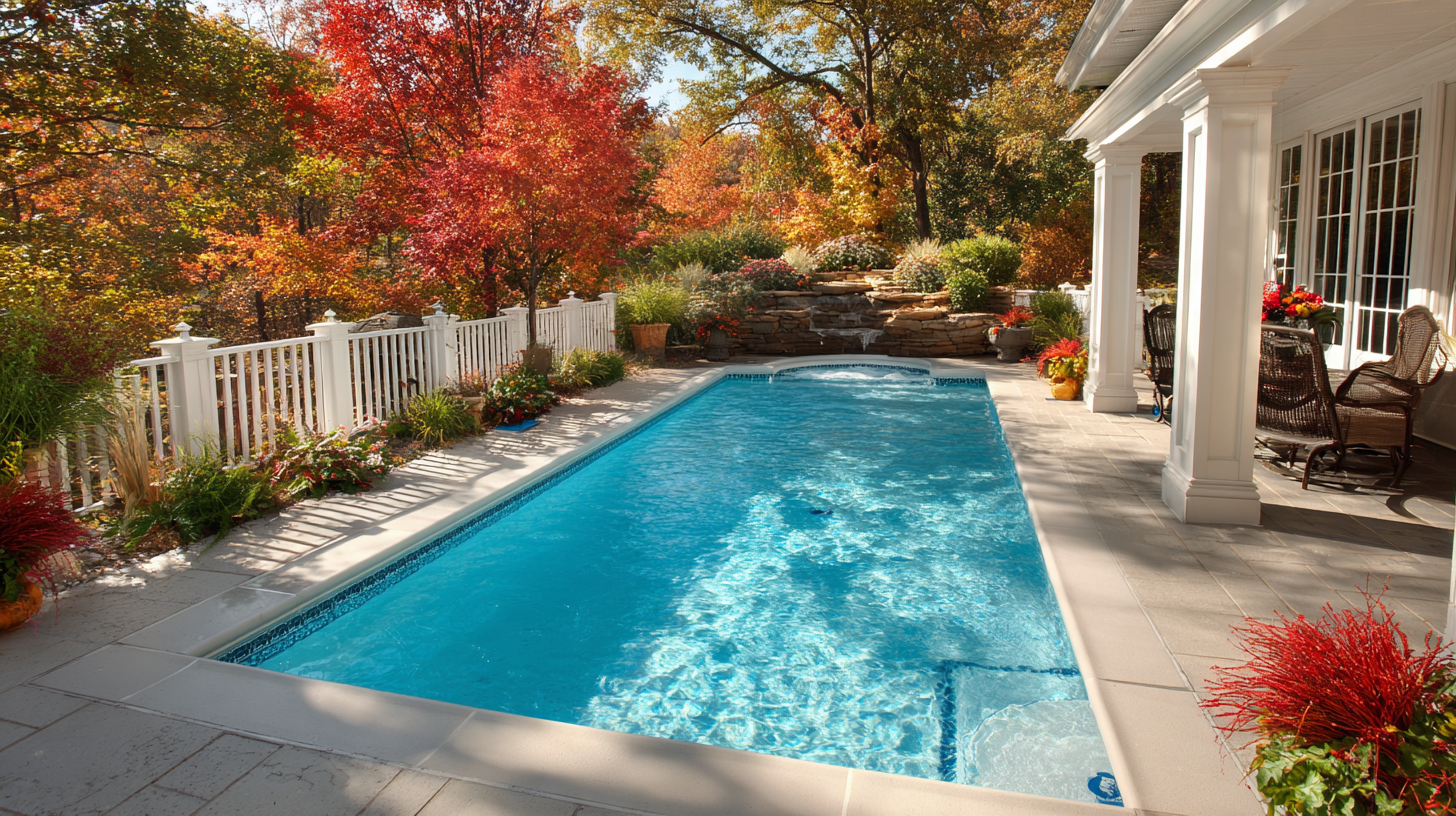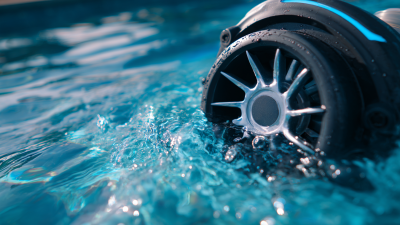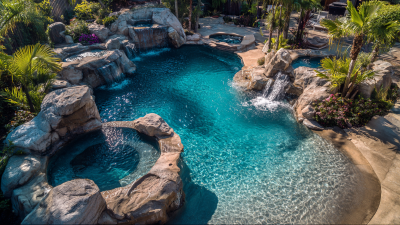The Ultimate Guide to Choosing the Best Swimming Pool for Your Home
Choosing the perfect swimming pool for your home is a decision that combines personal preference with practical considerations. According to the Pool & Hot Tub Alliance, over 10 million households in the U.S. enjoy the benefits of swimming pools, highlighting their popularity as a home enhancement. With a plethora of styles, sizes, and materials available, navigating the options can be overwhelming.

Aiming to simplify this process, our guide draws insights from industry trends and expert advice to help homeowners make informed choices. Additionally, platforms like swimmingpool.com offer extensive resources and reviews that can further assist in finding the ideal pool solution tailored to individual needs. Whether you envision a serene backyard oasis or a vibrant activity hub for family and friends, understanding the key factors will lead you to a satisfying investment that elevates your outdoor living experience.
Understanding Your Space Requirements for a Swimming Pool
When considering a swimming pool for your home, understanding your space requirements is crucial to making the right choice. Homeowners should first evaluate the available yard space, which can significantly influence the type and size of the pool. According to the American Society of Landscape Architects, the average residential pool size ranges from 600 to 800 square feet, necessitating at least 1,000 square feet of surrounding area for safety and aesthetics. Remember to also account for essential features like a deck, landscaping, and pool equipment.
Tip 1: Measure your yard carefully and consider how much sun exposure and privacy your space receives. This can affect not only the size of the pool you choose but also its placement.
Furthermore, local zoning laws and regulations can dictate pool dimensions and placements. A National Association of Realtors report indicates that homes with well-placed pools can increase property value by up to 7%, provided they fit comfortably within the landscaped area.
Tip 2: Consult with a pool designer or landscape architect to ensure your pool complements your existing architecture and landscape while adhering to local guidelines. This professional insight can help maximize your space and enhance your home's appeal.
Exploring Different Types of Swimming Pools: Pros and Cons
When considering the perfect swimming pool for your home, it’s essential to evaluate the different types available, each with its own distinct advantages and disadvantages. Above-ground pools are often the most budget-friendly option, providing a quick installation process and lower maintenance costs. However, they may lack the aesthetic appeal of in-ground pools and can be less durable over time. These pools are ideal for families seeking a temporary solution or those working with limited space.
In-ground pools come in various materials, such as vinyl, fiberglass, and concrete, offering a more permanent solution with customization options to enhance your backyard's look. Vinyl pools are relatively affordable and easy to maintain, though they might require liner replacements every few years. Fiberglass pools are known for their durability and quick installation but can come with a higher initial investment. Concrete pools allow for the most personalized designs but demand more upkeep and can take longer to install. Understanding these pros and cons is crucial to making an informed decision that aligns with your budget, space, and lifestyle preferences.
Evaluating Materials and Designs for Longevity and Aesthetics
 When selecting the best swimming pool for your home, evaluating materials is crucial to ensure both longevity and aesthetics. Different materials provide varying benefits; for instance, concrete pools are highly durable and can be tailored to any shape, while fiberglass options offer quick installation and require less maintenance. The choice of material not only influences the lifespan of the pool but also its overall visual appeal and safety.
When selecting the best swimming pool for your home, evaluating materials is crucial to ensure both longevity and aesthetics. Different materials provide varying benefits; for instance, concrete pools are highly durable and can be tailored to any shape, while fiberglass options offer quick installation and require less maintenance. The choice of material not only influences the lifespan of the pool but also its overall visual appeal and safety.
Tips: Consider the environmental impact of the materials you choose. Opting for sustainable options can enhance the aesthetic value of your pool area while promoting longevity. Additionally, think about the maintenance requirements of different materials; for example, some materials may require specific cleaning protocols to maintain their appearance and functionality over time.
Moreover, keep in mind that the design of your pool should complement the architecture of your home. A well-integrated design ensures that the pool becomes a focal point rather than an eyesore, enhancing the beauty of your outdoor space. Choosing materials that reflect a cohesive style with your home will not only elevate the aesthetic appeal but also contribute to a more enjoyable swimming experience.
Budgeting for Your Pool: Initial Costs and Maintenance Expenses
When considering a swimming pool for your home, understanding the financial implications is crucial. In 2025, the costs associated with in-ground pools can range significantly, often starting around $35,000 and escalating up to $100,000 or more based on customization and installation complexity. This contrasts sharply with above-ground pools, which generally incur costs between $1,500 and $15,000, making them a more affordable entry point. However, it's important to factor in that in-ground pools typically offer higher property values and longevity, which can justify their initial expense.

Budgeting for a pool goes beyond the purchase price; maintenance is a key consideration that can significantly impact long-term costs. Annual maintenance for in-ground pools can average between $3,000 and $5,000, including cleaning, chemical balancing, and repairs. In contrast, above-ground pools may require about $1,000 to $1,500 yearly. Investing in a maintenance franchise can also prove lucrative, as the demand for pool upkeep remains steady, with franchise owners often reporting substantial ROI based on consistent service contracts and customer retention. Understanding these financial dynamics will empower homeowners to make informed decisions about their swimming pool investments.
Choosing the Right Location: Sunlight, Accessibility, and Privacy
When selecting the perfect location for a swimming pool, several key factors should be considered to enhance your enjoyment and ensure practicality.
Sunlight is paramount; a pool positioned in a sunny area will not only keep the water warm but also encourage more frequent use.
Ideally, aim for a location that receives at least six hours of direct sunlight each day. This will reduce heating costs and create a welcoming environment for both family and guests.
Accessibility is another critical aspect. The pool should be easily reachable from your home, patio, or outdoor entertainment areas.
This proximity not only facilitates spontaneous swimming sessions but also makes supervision easier, particularly for families with young children.
Furthermore, consider the layout of your landscape: pathways should be clear and unobstructed, and there should be ample space for poolside furniture and activities.
Lastly, privacy cannot be overlooked. A secluded spot will allow you to enjoy your pool without feeling exposed to neighbors or passersby.
Utilize natural landscaping elements such as trees, hedges, or fences to create a more intimate setting.
Balancing sunlight, accessibility, and privacy will ultimately lead to a more enjoyable swimming experience for you and your family.
Related Posts
-

Discover the Benefits of a Service Pool for Your Business Efficiency
-

Exploring the Essential Role of Pool Motors in Maintaining Crystal-Clear Swimming Pools
-

Transform Your Backyard: The Complete Guide to Creating the Perfect Pool Swimming Pool Oasis
-

Maximizing Efficiency with a Comprehensive Guide to Service Pool Management
-

The Benefits of Using Public Pools for Community Health and Wellness
-

Exploring the Best Pool Pumps in Canada: Your Ultimate Guide to Cleaner Waters
